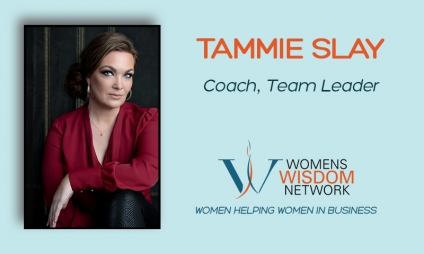Human beings are meant to be creative. Year after year, entrepreneurs and employees alike are constantly driven to transform the world around them into something new, useful, and impactful in both their careers and personal lives.
One problem we witness too often in society is the treatment of creativity and business innovation as mutually exclusive occurrences. Trust me when I say they are directly connected far more than the average person realizes.
Most notably, older organizations are the ones that place creativity in one column and positive disruptions via innovation in another. The fact that many Americans work for organizations that have been around for many decades makes this divide between creativity and innovation all the more concerning. For example, Citibank started as the City Bank of New York in 1812, making them over 200 years old!
The Test of Time
Older organizations, especially those as old as Citibank, have been through a lot. Some have been through the Great Depression, world wars, the Great Recession of 2007–09, and now, most recently, the coronavirus pandemic and subsequent economic downturn.
This can certainly be viewed as a positive feat: For a company like Citibank to withstand so many outside disruptions, they have to be doing something right! However, for many other older companies, being around for decades and in some cases, centuries, causes them to more quickly protect and defend the status quo. Longevity like that fosters the mindset of “this formula has been working for over a hundred years, why change it now?”
What many don’t realize is that as time has passed and the world has changed, their traditional products and services may continue to sell well, but the margins are much lower and there is much more competition. In turn, the company will blame this stagnation on age—believing that only new and fresh things sell these days—when the reality is the issue is lack of innovation. And why might a company lack innovation? It is because they have deprioritized creativity!
Anticipation Can Aid Creativity
The age of your product, service, culture, and even your employees is not the problem. Corporate culture that has been in existence for a long time can work for you or against you, depending on the key values of that culture. If innovation, creativity, and change are important and these related behaviors are rewarded in some way, then an older organization can do well.
Let’s go back to our example of Citibank, for instance. Disruption of any kind, especially digital disruption and technological change, challenges companies in ways that often send them in two directions: one of agility, which we are all familiar with and only gets us so far, and one of anticipation, in which a company decides to pay attention to the Hard Trends shaping its industry both inside and out, and look to pre-solve future problems to creatively innovate and stay ahead of the curve.
For Citibank, a technological disruption came in 1975 when ATM machines exploded onto the banking scene, allowing individuals to withdraw their own money without the face-to-face contact with a teller needed prior.
Instead of only reacting, Citibank established a research center, which was a very early iteration of what would eventually become its first Innovation Lab in Dublin in 2009. This research center was intended to allocate finances to researching customer behaviors—both with these new machines and how they may behave—as technological advancements continued in the banking industry, up to and including the mobile banking we see today.
Often it takes a crisis to make us step back and rethink our products, services, and even our culture. When Citibank implemented my Anticipatory Organization Model, they took the opportunity to fund creativity by way of Innovation Labs, well aware that establishing a creative safe space such as an Innovation Lab fosters the ability for its team to solve customer problems before they even exist, anticipating customer needs and how they will evolve.
Keeping Your Organization Comfortably Creative
Citibank’s Innovation Labs are sure to keep them ahead of the curve, especially as blockchain technology develops further and disrupts the banking industry yet again, just as mobile deposits and ATMs have in the past.
To maintain a creative company, you must have creative individuals, but as a leader or a manager, you must be aware that, for many, creativity is a private endeavor. Some individuals are afraid of sharing their ideas for fear of judgment, or perhaps they’re afraid that they will not receive the credit they deserve if their idea is implemented.
How do you combat these fears? Citibank has traditionally kept its Innovation Labs separate from its corporate headquarters in an effort to provide a sense of privacy for those who work within said environment to openly create.
Think of how your organization can foster better creativity. Much like tactile art, sometimes it starts with a safe space, free of judgment. But remember, while a creative space and the traditional operations of your organizations can be separate, creativity and innovation cannot, and innovation will ultimately lead to anticipation!
The Vice President had an extra black fly in his extra white hair during the debate. The fly became famous while no one could hear what the VP had to say, so distracting was the insect;
The dog hesitated coming in the house, knowing she had an issue beneath her tail. Encouraged enough by her unsuspecting yet doting parents to come in, she ran up the steps, leaped on the couch, across the carpet, raced to the bedroom, and sat on the pillow…only to leave behind a streak of poop throughout the home;
The Zoom call was going well, every “Brady Bunch style” video tile filled with engaged co-workers having a great meeting, when suddenly an attendee is clearly seen walking from one room to another, unfortunately straight into the restroom. Setting the camera in front of herself on the ground, assuming her video is off, she proceeds to go the bathroom in full view of her horrified peers.
Awareness.
How aware are you when the fly lands on your head, dog drags in a fresh tootsie roll, or the Zoom call captures your most private moments?
There is only so much we can do to be aware of everything, but consider your promise to yourself to be aware of what is happening around you – either to yourself or to others.
Perhaps it’s being/having the kind of friend who runs to your aid regarding that piece of salad stuck in your teeth before one more humiliating conversation;
Or the kind of driver that conscientiously scoots all the way over when making a right hand turn to allow traffic a continuous flow, instead of camping in the driving lane, making every car behind to slam on their brakes as a wide, slow, thoughtless right turn is made;
Consider the checkout clerk who has one line building as the other clerk lallygags about, finally opening up their lane only to have back of the line people rushing over, when clerk could have controlled the patiently waiting, yet seething unfair customer situation by calling over the “next in line”!
Awareness.
2 weeks ago, my sons and I spent over 3 hours raking and shoveling leaves. We have so many leaves we use snow shovels in a snowless winter that this has so sadly been in a traditionally snowy place.
We filled 6 contractor-sized black garbage sacks with leaves. You would think we live in Vermont or Canada we had so many leaves, even when we only have 2 naked trees.
We live in a vortex of leaf collection due to the school field in front of our home, which funnels everything up our driveway from leaves to school yard candy wrappers, COVID masks, and even schoolwork. In fact, Little Johnny, our neighbor, got a 5 out of 10 on his last spelling test. I passed him in my car recently, rolled down my window, and told him “i before e except after c…most of the time.” He looked at me with the kind of look that says, “How did he know?”
As I sat on my porch last week writing in my Journal about awareness of my life and actions, I watched my neighbors on both sides of our home (neighbors we love and whom we are so grateful are our friends), as they used a blower to move all of the leaves from their yards…into the street. I noticed a Cheetos bag blowing from one, and an empty Gatorade bottle from the other, collected among the leaves.
Today I walked around my yard, only to find 3 more contractor-sized garbage bags worth of leaves to be filled in my once empty yard yet again…my trees barren for months on our property…and there mixed in a Cheetos bag and Gatorade bottle for my sons and I to pick up. Out came the snow shovels as we spent an hour picking up leaves not from our trees or yard, but from the street and other people’s lack of bagging.
I’m sure I deserve this…perhaps I wasn’t aware of how much noise our family makes late at night playing games through quarantine while the neighbors are trying to put their kids to bed?
Awareness.
Are you making a mess for others in your work?
Are you cutting corners others will have to pick up?
Are you aware of what you’re doing, when you’ve skimmed the email and re-asking the question already carefully answered in an overly crafted message?
Are you thinking of others or only thinking of self?
Are you able to catch everything every single time? Not possible. Sometimes there’s a fly in your hair and no one can hear your message; once in a while the dog will run in with a poopie tail; and yes, you may even relieve yourself on a broadcasted Zoom call.
But hopefully, as we fall under the all seeing eye of observation, be it social media, our work as performers, or in the community, we can be the kind of person who promises ourselves to think of others first, to point out when something is morally and ethically wrong, and stand for something when it is called for.
Mostly, to just be aware of the good we are creating or the mess for others we are causing.
That is The Promise.
Here is Your Promise Prompt This Week:
Take note in your Journal or Calendar of 2 instances you were extremely aware each day –
1 time for SELF
1 time for OTHERS
Write out how it affected you and them, the outcome, the power of you keeping The Promise.
Comment below what you did even for one day and I will send you a link to one of my video book chapters that no one has access to.
Lots of talk making its way through our industry and the public about a possible first time buyer tax credit. Some say possibly $15,000 is a number but nothing is even close to being on paper, much less a law. But as long as people are going to talk about this, why not have a really good look at it?
• How is $15,000 going to help a first time buyer when the ONLY thing it will do is increase prices and the number of people looking for the lowest price homes in each market?
• More people chasing fewer properties only drive prices higher!
• If the seller knows everyone has an “extra” $15,000, what do you think is going to happen?
To those members of Congress who think throwing money at a problem that doesn’t exist somehow solves something, you are wrong! We need more people learning to save more money by themselves, or taking all the stimulus money already in the pipeline and using that money if they like; but there is no lack of opportunity for people to earn and save money if they want to do it! You already have programs in place to help the first time buyers. There is no shortage of potential buyers in this market!!!
To those members in Congress who think they must throw money at the housing market for some reason or another, how about doing so in a way that might actually help? Why not actually help the market by issuing a $15,000 tax credit to anyone that SELLS a house? More incentive to sell would help bring more homes to the market. It would provide opportunities in all markets, not just the entry point. This would:
• Not only help buyers at the entry level get in, but would also help everyone in all markets!
• Pulling people into the market from the top, middle, and bottom; not just pushing the weakest into an already crowed arena.
• Might help out investors who have been abused by government decree to allow tenants to stop paying rent to landlords who must still do so!
• Investors might take advantage of selling investment properties and making them available back to owner occupied market!
So PLEASE, no first time buyer tax credit, it will only make things worse! If you must spend money; please put it into play in a way that will likely help everyone, not just a select few! A seller credit will do a much better job and work for everyone!
If any member of Congress wants to discuss this with me, I will be happy to make time and help you through this thought process.
This email address is being protected from spambots. You need JavaScript enabled to view it. I look forward to a lively discussion!
 Tammie is a native Texan and has been a resident of Frisco, Tx for over 20 years. Currently, she is the Broker/Owner of two real estate companies and the team leader of Hip Realty Group. Tammie has earned her CRS, GRI and SRS.
Tammie is a native Texan and has been a resident of Frisco, Tx for over 20 years. Currently, she is the Broker/Owner of two real estate companies and the team leader of Hip Realty Group. Tammie has earned her CRS, GRI and SRS.
She is a wife, mother of four children, dog owner, multi-million dollar producer, team leader, entrepreneur, community volunteer and seven year awardee of the Five Star Professional Award. Words clients have used to describe Tammie are tenacious, engaging, the slayer, hip, dedicated, bold, loyal, protective, knowledgeable, MommaSlay, candid and trustworthy.
 Greg Godek
Greg Godek
Sure, you could buy some roses.
Yes, you could cook an elegant romantic dinner.
Of course, you could give a heart-shaped box of chocolates.
But sometimes you want to do more than that. Sometimes you want to show just how much you really care, how much passion you really feel, and how much more your partner means to you than absolutely anything else.
Packed with unique suggestions, easy gestures, and thoughtful gift ideas, 1001 Ways to Be Romantic is a romance kit “worth memorizing” (Boston Herald). It’s a must-have for anyone, in any relationship (whether dating, engaged, or married for 50+ years!) who wants to spark some more love in their lives.
Several of us likely remember the Bitcoin boom around the end of 2017, when thousands of individuals bought Bitcoin, seeing the value of their dollar skyrocket for a brief period. This sent the banking industry into a tailspin, desperately trying to understand this new concept of a digital currency system, and areas of the government even began to prepare a way to legislate this unfamiliar system. The fact of the matter is that many people did not fully understand the mechanics behind Bitcoin. they may have listened to a friend of a friend who told them to buy Bitcoin, almost as if it was a fast-rising stock, in hopes that it would make them wealthy overnight. If you asked those same individuals to explain what blockchain technology is, they would meet your gaze with a blank stare.
Blockchain: A Whole New Financial Frontier
For those interested in digital disruption and technological advancements, Bitcoin represented so much more than a way to allegedly make money fast like some type of digital wolf of Wall Street. Bitcoin was the first widely accepted, mainstream iteration of decentralized and completely secure financial ledger systems, without the need for a middleman.
The real reason the banking industry and even our government panicked in the wake of Bitcoin taking off so suddenly was not entirely a knee-jerk reaction to the possibility that decentralized currency can facilitate off-the-books bad behavior; rather, it was that the software behind Bitcoin could scale so rapidly that several industries and careers would be turned on their heads.
Blockchain is the software behind digital currency like Bitcoin. How it functions is rather simple: It is a giant ledger system that facilitates peer-to-peer execution of a transaction without the need for a third party to be involved, and once said transaction is executed, it is fully traceable and secure. You cannot modify the transaction; it is set in stone.
You can see how this poses a concern for companies that function as a middleman, so to speak. From title companies and notaries in the real estate industry to high-powered lawyers who execute contracts, blockchain technology and its fully transparent peer-to-peer ledger system effectively renders some of those services useless, putting them out of business.
So in regard to the banking industry: As Bitcoin is rooted in decentralized finance, how do banks stay in the game as blockchain technology becomes more widely adapted?
Anticipation Is Key for Survival
Implementing my Anticipatory Organization® Model is crucial for banks and the several other industries that will be disrupted by blockchain technology to get ahead of this wave before they find themselves submerged beneath it.
Recognizing what I call Hard Trends, or future certainties that will happen, and understanding the difference between those and Soft Trends, or future maybes that are open to influence, is where anticipation begins.
An example of a Hard Trend that is shaping the world, both inside and outside of the banking and financial industry, is the growth of the low-latency digital connectivity of 5G. The speed afforded to us by 5G is astounding, making advancements like edge computing and machine learning even more efficient than ever before, which appears as a threat to some in certain careers.
Identifying that connection speeds will only continue to increase as a linear change is a huge step in finding ways to pre-solve predictable problems that come with such a disruption. So in banking, the most identifiable Hard Trend in blockchain technology is people’s response to buying Bitcoin. The concept of decentralized currency will only continue to grow, so organizations must start to adapt.
Moving Beyond Crisis Management
We are all good at reacting and responding, putting out fires, and managing crises. Banks and the financial industry viewed Bitcoin as a crisis that needed managing and nothing more. This couldn’t be more wrong!
To thrive in this new age of hyper-change and growing uncertainty, it is now imperative to learn how to accurately anticipate the future instead of merely engage in crisis management. When your focus is on agility and reactionary responses, you will always be behind the curve.
Anticipation sets you ahead of the curve by using Hard Trends to your advantage. If the Hard Trend in banking is decentralized currency, you adapt that concept and the technology behind it to better serve your customers and become a positive disruptor within the industry before it disrupts you.
Employees of an Anticipatory Organization understand that those who can see the future most accurately will have the biggest advantage. They know that you cannot change the past, but you can shape the future based on the actions you take in the present. As such, they actively embrace the fact that many future disruptions, problems, and game-changing opportunities are predictable and represent unprecedented ways to gain advantage.
Never Say Never
Every year, I witness businesses and individuals say “That’ll never happen” or “Customers prefer to do things this way.”
A cliche that has withstood the test of time is the phrase “Never say never,” and it remains true because of exponential digital transformation in our world. Without a doubt, if you asked a bank teller in 1975 if they thought their job was in jeopardy because we would eventually see virtual teller systems that implement artificial intelligence (AI), they would chuckle at your vivid imagination.
And yet, here we are. Several banks have implemented virtual teller systems, commonly rooted in their desire to operate in a lean and agile way to save money, just in case blockchain technology goes speeding by them like a bullet train, taking up residence in the industry and disrupting even the biggest players in the game.
Much like that teller laughing about the concept of AI doing their job, many banking executives wrongfully use a cryptocurrency like Bitcoin as their frame of reference for understanding what blockchain is or is capable of doing to their industry. Trust me when I say it will be far more disruptive than Bitcoin ever had the chance to be.
To succeed in business these days, whether you’re in banking or manufacturing, simply being lean and agile and executing well is no longer enough. You and your team need to harness the ability to anticipate the future. In fact, I see this as being the most important missing competency that we’ve seen for decades!
How much time do you spend trying to keep up, putting out fires, managing crises, and reacting to change? Learning to be anticipatory can change that and provide you with a new way to actively shape your future.
More...
Question Dear Reader – What makes you Stand Out in this world?
We could talk about your business, even your product, but this is about YOU.
What makes YOU unique?
Speaking in front of 500 Leaders recently I posed the question,
“What is your Signature Move and how are you using it daily in your business as a LEADER?”
The blank stares concerned me.
Digging deeper, and even asking for their hands to go up, searching for ideas of what makes them unique, no one could even offer one unique characteristic about themselves as leaders, let alone as human beings.
These are leaders of businesses, government, education, communities…and yet identifying their differentiators was nearly impossible for them.
How are Leaders supposed to lead anyone if they don’t know what sets them apart?
The essence of leadership is knowledge of our strengths, clarifying skillsets, and keeping our promise to utilize what we have!
…and in turn, empowering those we serve as leaders to identify theirs as well.
So how are you keeping that promise to those you lead as the LEADER?
Not sure?
Want to discover yours?
(As a side note, Dear Reader, as a Speaker I am hired because I’m entertaining with a message, and then event planners are surprised because it’s inspiring, but attendees are only moved because I am really there to provoke you, your thinking and initiate actual change to drive sales, profit, and success. So let’s do this)
HERE’S AN EXERCISE you can do for yourself to begin The Process:
1. If I were to ask you to identify 1 or 2 traits that set you apart in this world it will cripple your thinking. Instead, write 100 things that you are good at as fast as you can.
2. Upon completion begin circling the words that really resonate with you, which identify your passions and help you see who you really are. (for example, mine would be words like: “funny”, “creative”, “writer”, “thoughtful”, “worker”, etc)
3. Of the circled words, narrow it down and only write the Top 10 you believe tell the story of you, which have helped define your life.
Look at these words for a minute.
Own them!
Now consider your job, your career path, where you landed.
What is the distance between what you thought you’d be as a kid, compared to what you worked on in college, and the desk in the office where you now sit?
Don’t be alarmed, there’s a reason for all of it.
After you IDENTIFY (Step 1) a certain amount of talents, gifts, traits naturally born within you, in your DNA, which make you who you are, the process begins.
The next steps in the process are what I teach in my presentations in a hilarious and entertaining way to the leaders among us, and it involves the clarifying process through collaboration with those you trust, and finally magnifying our findings.
In other words, we CLARIFY (Step 2) when we ask those we trust in our families, work, as well as clients we’ve worked and even those we’ve lost, to help us refine our differentiation. This is the ultimate level of engagement when we are willing to embrace what we really bring to the table of business, relationships and life.
And then we MAGNIFY (Step 3) our Signature Move through leverage in each interaction, connection, and transaction for the rest of our lives, and in turn, keep The Promise as Leaders.
What’s your Signature Move? Here’s your process:
1. Identify = Discover
2. Clarify = Refine
3. Magnify = Leverage
We call this “Creating Legendary Leaders”, because legends keep promises, and this all comes together when we realize it is up to us to own our amazing talents, strengthen them, help others find theirs, and bless the world with what we’ve got that is uniquely ours.
That is your differentiator.
That is what makes you invaluable and indispensable.
That is your Signature Move!
That is what makes you Legendary as both a Leader and a Performer.
When you discover, and ultimately share, your uniquely YOU Signature Move, you make a difference in this world and live the life you were intended to live.
So let’s return to the beginning – What makes you Stand Out in this world?
It’s your Signature Move. Are you using it?
Enjoy this video of my comedy routine, showcasing this incredibly funny identifying metaphor using my face, as to how we can all clarify our Signature Moves and keep our Promise to share it with the world as an incredible differentiator, your gift of Leverage in Leadership.
I look forward to us finding more clarity about your uniqueness together next week.
We have about a week to reach out and make our connections with our accountant referral partners before they start getting tied up with tax returns. Accountants are excellent referral partners and very easy to connect with if you follow a simple plan like the one we have laid out on the website or in my e-book. The important starting point is to NEVER cold call or direct mail an accountant for business that you don’t know! So what are good ways to engage accountants?
• Verify your client’s tax returns! The simple task of calling an accountant to verify that the tax returns your client gave you are the returns that were filed is a great starting point and likely not being done by other people in your market! Not only is this a great ice breaker, it can save you lots of time and surprises down the road!
• Follow-up with each accountant with a Thank You card after a closing to thank them for their help. So few people send cards in the mail that they really stand out!
• Make them part of your “Collecting 9’s & 10’s” process and see how you can refer them your clients that need help.
• Have a strategic plan on how you can provide exceptional value to the accountant’s current clients, as well as ways of incorporating that accountant into you seminars and videos as a local expert.
Once you have connected with the accountant, be sure you are sharing important information they and their clients need to be aware of. Changes in rates, programs, property values, and other considerations can really help that accountant serve their clients. Just the ability to provide a simple “Annual Mortgage Fitness Check-up” for their clients can be an exceptional value added service for that accountant. This works especially well in early September when accountants are getting ready to work with those clients that filed for tax filing extensions! You can read more about this on the website.
Accountants are really great referral partners! You just have to get in front of them and provide exceptional value through a few very simple strategies. If you don’t have a list of accountants already; start collecting them now and they will be available for you in early September. Remember, once the second week of February hits, accountants will be working on their tax preparations and likely to involved to spend much time with you, so don’t be a pest!
Questions or comments: This email address is being protected from spambots. You need JavaScript enabled to view it.
Meet Super Leader, Ruby Bright, President & CEO of the Women's Foundation for a Greater Memphis and See How She Does It! [VIDEO]
 Under her nearly 20-year leadership, WFGM has served as a backbone organization in the city promoting philanthropy, fostering leadership and supporting program services for women and families. WFGM’s impact and programs are nationally recognized, proving the power of place-based, strategic fundraising and grant development for intergenerational impact. Since 1996, WFGM has invested more than $30 million over 600 programs involving more than 100 local non-profits, including investments in advocacy and research.
Under her nearly 20-year leadership, WFGM has served as a backbone organization in the city promoting philanthropy, fostering leadership and supporting program services for women and families. WFGM’s impact and programs are nationally recognized, proving the power of place-based, strategic fundraising and grant development for intergenerational impact. Since 1996, WFGM has invested more than $30 million over 600 programs involving more than 100 local non-profits, including investments in advocacy and research.
Bright’s numerous awards include the 2015 Super Women In Business Award, 2017 National Organization of Black Elected Legislative Women (NOBEL Women) Shining Star Award, and the 2017 Girl Scouts One Smart Cookie Award, 2017 Memphis Heritage Trail Trailblazers Award. Bright also services on the Memphis Challenge Board of Directors.
Agent Resource

From buying and selling advice for consumers to money-making tips for Agents, our content, updated daily, has made Realty Times® a must-read, and see, for anyone involved in Real Estate.











